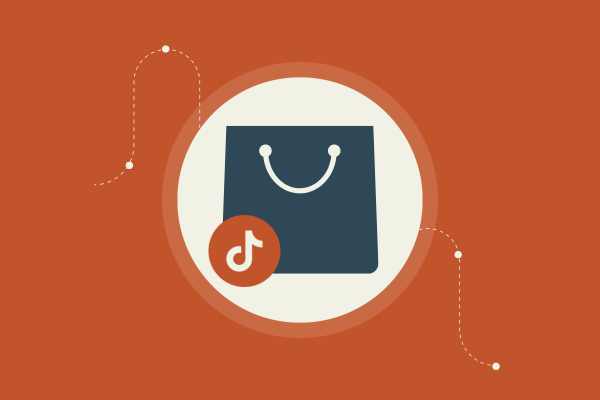How Productive Efficiency Impacts Your eCommerce Business Success
In eCommerce, productivity is your secret weapon. Being efficient isn't just about doing things faster. It’s about doing the right things that push your business toward success. Your company's productive efficiency directly impacts your profitability and growth. When you're productive, your ROI skyrockets, and your business scales faster.
Get ready to transform how you think about operations and growth. Understanding productive efficiency can free up resources and time to focus on what really matters. This means more time on marketing strategies and improving customer experience instead of being bogged down by tasks that don’t move the needle.
Every business wants to boost sales and deliver top-notch service. By leveraging analytics and automation, you can elevate both. With the right tools and insights, you’ll see where your efforts pay off the most. Ready to skyrocket your eCommerce success? Let’s dive in!
Key Takeaways
Productive efficiency fuels growth and profitability.
Leveraging tools and insights optimizes operations.
Elevating user experience boosts sales and service.
Understanding Productive Efficiency in Ecommerce
Productive efficiency is all about getting the most out of your resources with the least waste. In the world of ecommerce, mastering this can give you a huge edge over your competition.
Defining Productive Efficiency
Productive efficiency means squeezing every drop of potential out of your resources. It’s like getting the best out of every dollar you spend on production. You want to minimize waste and maximize output. It’s crucial to know the difference between just doing things right and doing the right things. If you manage to produce more goods with fewer resources, you’re winning at this game. In ecommerce, this can mean optimizing the tech, processes, and even the team you have.
Significance of Efficiency for Ecommerce
Now, why does efficiency matter so much in ecommerce? Because it affects your bottom line—big time. Efficient operations can drastically cut your costs. This means bigger margins and more cash flow. Also, efficiency makes your business scalable. When things run smoothly, you can effortlessly handle more orders, more customers, and ultimately more profit. It’s about using technology smartly to streamline your operations without compromising on quality. Setting up an efficient ecommerce system positions you to quickly adapt to market changes and consumer demands. This adaptability is crucial for ecommerce success.
Maximizing Operations
Boosting efficiency can catapult your eCommerce business to new heights. By fine-tuning inventory, website performance, and the checkout process, you set the stage for smoother operations and happier customers.
Streamlining Your Inventory Management
Inventory management isn’t just keeping track; it’s about elevating business potential. Imagine always having what your customers need without any excess. Use smart software to forecast demand, so you're never left guessing.
Automate wherever possible. Set up triggers when stock levels hit low points. This reduces manual errors and frees up your time.
Keep your suppliers on speed dial. Build strong relationships to ensure fast restocks. An organized approach keeps everything flowing smoothly.
Enhancing Website Performance
Your website is your salesperson. If it lags, your profits sag. Speed is everything. A slow load time and you lose customers before they see your stuff. Optimize images and reduce file size for faster load times.
Consider investing in a content delivery network (CDN). CDNs distribute your site data across global servers, ensuring swifter access regardless of user location.
Test your site regularly. Ensure all links work and pages display correctly. Keeping it user-friendly keeps them coming back.
Improving the Checkout Process
The checkout process can make or break a sale. Make it easy-peasy. Fewer steps mean fewer clicks to complete a purchase.
Offer guest checkout options. Not everyone wants to create an account—sometimes they just want to buy and bail.
Ensure payment security. Visible badges or seals signal safety to your buyers, building trust and boosting conversions.
Finally, reduce form fields. Ask only for what's necessary. Simplicity equals success in sealing the deal.
Leveraging Analytics for Growth
To boost your eCommerce business, harnessing data and monitoring performance metrics is key. Use analytics to make decisions, test strategies, and optimize results.
Harnessing the Power of Data Analytics
Data analytics is your business's GPS. It points the way to growth. By examining trends and customer behavior, you get clear insights. Understand what's working and what's not. It helps in tweaking your operations to be more efficient. Identify bottlenecks and fix them.
Data doesn't lie. Use insights to improve customer experience, reduce costs, and maximize profits. For example, tracking customer behavior can lead to better marketing strategies, improving click-through rates. This game plan pushes your business forward. It's not just about knowing your numbers. It's about using them to climb to the next level.
Performance Metrics You Can't Ignore
Focus on key performance metrics. Numbers that matter: conversion rates, customer lifetime value, and cart abandonment rates. These give you a snapshot of your business health. Conversion rate shows how many visitors turn into buyers. A high rate means your marketing's working.
Customer lifetime value tells you how much a customer spends over time. Increase this by fostering loyalty. Cart abandonment rates reveal friction points in the purchasing process. Fix these issues to convert interest into sales.
Stay on top of these metrics. Adjust strategies as needed. Track performance regularly. It keeps you competitive and agile in a fast-changing market.
A/B Testing: The Secret Weapon
A/B testing is like a free trial. Test two versions of a webpage or email to see which performs better. Small changes can have a big impact. Swap out images, tweak headlines, or alter call-to-action buttons. Measure the results.
Use A/B testing to understand what resonates with your audience. It minimizes guesswork. This method is cost-effective and results in higher conversion rates. Consistent testing and tweaking lead to findings that can transform your business.
A/B testing is your secret weapon for scaling your eCommerce business. Implement changes based on real data. Avoid making changes blindly. Test, analyze, and adapt.
Elevating Marketing Strategies
To boost your eCommerce success, focus on creating a seamless customer journey, leveraging digital marketing and SEO, and running impactful email campaigns. These strategies can turbocharge your brand visibility and sales.
Crafting a Cohesive Customer Journey
Your customer's journey is everything. You want them to move smoothly from discovery to purchase. Start by mapping out their path. Understand how they find you. Check out what makes them stay. From your homepage to checkout, everything needs to guide them.
Make sure your website is intuitive. Easy navigation keeps them happy. Use consistent branding. Colors, fonts, and messages should blend well together. If they see the same style on social media, emails, and your site, it feels right. It's about building trust and familiarity.
Personalization is key. Tailor recommendations based on past behavior. Use data! Send follow-up emails that are relevant. The more personal, the better.
Digital Marketing and SEO Techniques
This is where the magic happens. Digital marketing and SEO are powerful tools. You want your store to be the first thing they see when they search. It's all about keywords. Identify what your audience is searching for. Use those keywords on your site. This increases visibility on search engines.
Quality content is a must. Blogs, videos, and infographics help engage your audience. They also keep visitors on your site longer, which is gold for SEO. Don't forget backlinks. The more reputable sites that link to you, the better. It's like getting a thumbs up from the internet.
Social media? Huge impact. Platforms like Facebook and Instagram help spread the word fast. Paid ads can give you that quick boost. Always keep an eye on analytics. Track what's working and tweak what's not.
Effective Email Marketing Campaigns
Think of email marketing as your secret weapon. It's direct and personal. First, build a solid email list. Offer something valuable in exchange. Maybe a discount or a free guide. People love free stuff.
Segment your audience. This way, you can send specific content to different subscribers. Crafting the perfect subject line is crucial. It's the first thing they'll see. Make it catchy and relevant.
Emails should provide value. It’s not just selling, it's sharing. Share tips, offer insights, or tell a story. Mix up your templates to avoid monotony. Measure success with open and click rates. These numbers let you know what hits the mark.
Keep testing and refining. Your goal is building relationships, not just transactions.
Boosting Sales through User Experience
When it comes to growing your eCommerce sales, nailing the user experience is crucial. A personalized shopping experience can skyrocket customer satisfaction, while easy navigation keeps customers happy and on your site longer. Here's how to make it work for you.
Personalizing the Shopping Experience
Personalization is your secret weapon for better sales. Don't treat every customer the same. Use data to make each visit unique. Tailor product recommendations based on what your customers love. If someone buys running shoes, show them matching socks or a sports watch.
Email marketing is another personalization tool. Send targeted product updates or discounts based on viewing history. This keeps your brand relevant in their minds and encourages more purchases.
Think of personalization as a conversation with your customer. Get to know them. Respond to their needs and they'll keep coming back. Customers like feeling special, and a personal touch can boost loyalty and sales dramatically.
Simplifying Navigation and Search
Nobody likes getting lost. A cluttered site turns potential buyers into frustrated escapees. Keep your navigation simple and logical. Clear categories help users find what they want without hassle.
A strong search function is key. Let them search effortlessly with smart filters and autocomplete. If they’re searching for "red sneakers," don’t show them blue sandals.
Consider offering visual search tools. These let customers snap a photo and find similar items on your site. It's quick and keeps customers engaged.
Remember, a well-organized shop is a happy shop. If your customers can find things fast, they’re more likely to buy. Easy navigation makes shopping a breeze and improves the overall user experience.
Enhancing Customer Service
To boost your eCommerce success, focus on customer support, engagement, and feedback. These elements are key to building strong relationships with your clients and keeping them happy.
Customer Support: Your Frontline
Customer support is your first line of defense. It handles questions, solves issues, and makes customers feel valued. Make sure your team is trained to be quick and efficient. Speed matters when dealing with complaints or queries. Use live chat for instant response. An omnichannel approach lets you connect across platforms, making it easier for customers to reach you.
Support goes beyond problem-solving. It’s about showing appreciation and building trust. Your team should know your products well and handle interactions with empathy. Personalized service is a game-changer. Customers love it when you remember them.
Engagement: Building a Loyal Base
Customer engagement keeps people coming back. Be active on social media and email marketing. Keep content interesting and relatable. Start trends, run contests, and offer exclusive deals to keep customers hooked.
Loyalty programs are effective. Offer rewards for repeat purchases to show appreciation. Push for two-way communication. Ask questions and invite opinions. Personalize messages to add that extra touch.
Strong engagement means understanding customer behavior. Knowing what they like helps tailor offerings and boost satisfaction. Engagement builds loyalty, and loyalty drives sales.
Customer Feedback and Continuous Improvement
Feedback is pure gold. It tells you what’s working and what isn’t. Use surveys, reviews, and social media polls to gather insights. Analyze the data to find patterns and areas needing improvement.
Act on feedback. Show customers you're listening by making changes. This builds trust and shows you care. Keep improving your processes, products, and services. This creates a cycle of constant growth and satisfaction.
Involve customers in product development. Create a feedback loop where customers feel part of your brand. It increases loyalty and innovation. Stay adaptable and ready to address changing needs and preferences.
Incorporating Automation
Automation is like having a team of invisible helpers boosting your eCommerce business. It makes tasks smoother, increases productivity, and lets you focus on growth. Dive into how automation tools, emails, and shipping processes supercharge your success.
Automation Tools: A Game Changer
Imagine having a system that does the boring tasks while you kick back. That's what automation tools do. They're like your digital workforce, taking care of inventory, order processing, and customer updates. They don't need breaks and won't leave at 5 PM.
By automating these tasks, you save time and reduce errors. Efficiency boosts profits and lets you scale easily. You can focus on expanding your reach or perfecting your products. It's about working smarter, not harder. Automation tools are crucial for staying competitive in the bustling eCommerce scene.
Automated Emails that Convert
Emails are like mini salespeople. Automated emails boost your connection with customers. They remind shoppers of abandoned carts, thank them for purchases, and suggest new products. These messages keep your brand top-of-mind and encourage repeat business.
Your words should be persuasive and friendly. Make them feel personal, even when sent to thousands. It's about building trust and enticing actions. Tools for emailing let you segment your audience, so your message hits home with the right people. This precision enhances conversions and customer loyalty.
The Role of Automation in Shipping and Fulfillment
Shipping can make or break your customer experience. When done right, it leads to happy customers and repeat business. Automating your shipping and fulfillment streamlines the entire process. Systems manage inventory, update stock levels, and generate shipping labels effortlessly.
This efficiency speeds up delivery times and reduces human error, keeping customers satisfied. Plus, automation tools in shipping provide real-time tracking. Customers know where their package is at all times. This transparency builds trust and boosts your reputation. By simplifying these logistics, you're stepping ahead of the competition.
Optimizing Additional Operations
Get ready to level up your eCommerce game. Focus on efficiency in tax management, scaling through outsourcing, and tightening your supply chain. These areas aren't just extra steps; they're vital boosts to your business success.
Streamlining Tax Management
Taxes are not just numbers on a form; they’re crucial for your eCommerce business. Efficient tax management can save you time and money.
You want to automate as much as possible. Look for software that handles sales tax calculations and filings for you. It'll take a load off your plate.
Stay updated with tax laws. They change often, and missing out can cost you. Use tools that sync with tax databases to keep you in the loop.
Organize your records. Keep digital copies of receipts and invoices. A cloud-based system can be a lifesaver during tax season. You'll thank yourself later.
Outsourcing to Scale Up
Want to grow without burning out? Consider outsourcing. When you delegate tasks, you free up time to focus on big-picture strategies. You can outsource customer service, content creation, and more.
Find reliable partners. Check reviews and ask for recommendations. A good team will become an extension of your own business.
Track progress with clear metrics. Make sure outsourced tasks meet your standards. Regular check-ins and reports are key here. Outsourcing done right amplifies your capacity to innovate and expand.
Supply Chain Management Essentials
A tight supply chain propels your business forward. Begin by mapping out your process from start to finish. Know where every product is at every moment.
Work with dependable suppliers. Building strong relationships ensures smoother operations. Reliability can't be overstated here.
Implement real-time tracking. It reduces delays and keeps everyone informed. Quick adjustments can be made if something goes awry.
Use inventory management software to keep stock levels optimized. You don’t want too much or too little—just enough to keep sales flowing without hitches. A well-oiled supply chain minimizes costs and maximizes satisfaction for both you and your customers.
Assessing Industry and Market Trends
Navigating the world of eCommerce means keeping your eyes peeled for the newest market trends and understanding your competition. Knowing what’s happening in your industry helps you adapt and stay ahead.
Staying Ahead of Market Trends
Let's face it: change is constant. Successful eCommerce businesses ride the wave, not get swept under it. Keep up with trends to know what customers want next.
Trends like personalization and mobile commerce are hot now. Personalized shopping experiences draw repeat customers.
Tech advancements play a big role. Augmented reality (AR) makes online shopping interactive. Social media platforms are now shopping hubs. Keep tabs on ecommerce trends for 2024 and adopt those fitting your business model.
Tip: Subscribe to industry newsletters, attend webinars, and follow influencers. Stay informed, keep evolving, and don’t be left behind.
Competitive Analysis and Market Share
Want to crush it in the eCommerce world? Know your competition like you know your products. Competitive analysis is crucial.
Start by identifying your main competitors. Check what they do better and what you can do differently.
Look at market share. Who’s leading, and why? Analyze their strategies. Are they using social proof effectively? How about influencer marketing? Ecommerce analytics can provide insights into what works.
Here’s a quick tip: Perform SWOT analysis (Strengths, Weaknesses, Opportunities, Threats) for both you and your competitors. This gives you a clear picture of where you stand and what to tackle next.
Be the best by learning from the best—or be better.
Ecommerce Platform Insights
You're about to dive into some gold nuggets on choosing the best eCommerce platform, comparing giants like Shopify and Amazon, and unraveling the secrets of omnichannel strategies. These insights can transform how your business operates online.
Choosing the Right Ecommerce Platform
Choosing the right eCommerce platform is a game changer. The right platform can boost sales and streamline operations.
Think about features that matter most. Do you need inventory management, payment gateways, or customization options? Assess your business size and goals. Some platforms offer excellent scalability for growing businesses.
Budget is crucial. Examine pricing structures and hidden fees. Some platforms charge for add-ons or transactions.
Look out for ease of use. A user-friendly interface saves time and reduces errors. Integrations with other tools, like CRM and analytics, are also vital. Getting this right can be the first big step in crushing your eCommerce goals.
Shopify Versus Amazon: An Overview
Let's break down the basics between Shopify and Amazon.
Shopify is all about giving you full control of your store. You get to customize your branding, choose from tons of themes, and even use apps for extra features. It's great for brand building and expanding your unique identity.
Amazon, on the other hand, gives you massive reach. Millions of shoppers are already on the platform, searching for products. You gain access to their colossal customer base.
It’s powerful, but you sacrifice some control over your branding. Fees can add up with Amazon's referral and fulfillment fees.
Both platforms have strengths. Consider what aligns best with your business objectives. Whether it’s brand independence or exposure to a vast audience, choose what propels your shop forward.
Omnichannel Ecommerce Strategies
Understanding omnichannel eCommerce strategies is vital in today’s market. It’s about creating a seamless experience for customers, whether they shop online, on a mobile app, or in-store.
Everything connects smoothly, like a customer browsing online then picking up in-store.
Inventory management becomes crucial in omnichannel. Products must be available across all platforms without glitches.
Using data analytics helps you predict demand and supply accordingly.
Communicate consistently with your customers. Use the same branding and messaging on every channel. It builds trust and keeps customers coming back.
Focus on delivering convenience and quality. Omnichannel isn't just a strategy—it's the future of retail!







